HSE Students on Iran Trip: 'It Was Like Flying to the Moon!'
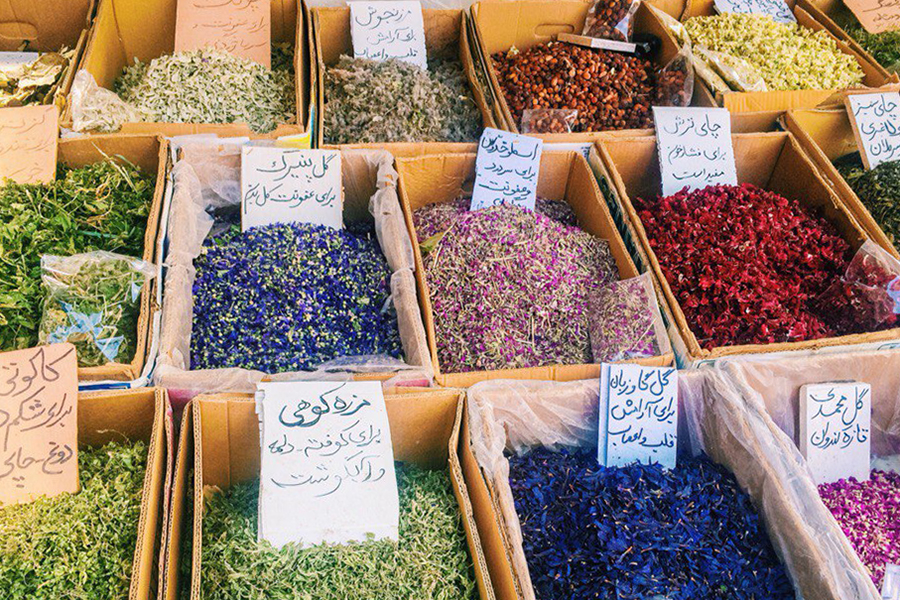 Photo by Veronika Molchanova
Photo by Veronika MolchanovaDuring the annual road expedition 'Cultural Effects of Borders', culture studies students from HSE visited Georgia, Armenia, and – for the first time – Iran. They talked to HSE News about the tastes and colors of Iran, and about how compliments form the foundation of the country's communications culture.
Students taking part in the expedition competed for selection. To win, they had to formulate a problem and hypotheses for future essays and research. The subject areas related to: the politics of historical memory; transformations in the urban landscape of Tbilisi, Erevan, and other cities; bazaar culture and soundscapes in Iran; architectural and cultural peculiarities of Iranian public space; Iranian art, communicative locuses of cities in the North and South Caucasus; the impact of Russian art on Iranian film, among others.
The trip was led by the Head of the HSE School of Cultural Studies Vitaly Kurennoy and academic supervisory for the MA programme in Applied Cultural Studies Rouslan Khestanov.
Final preparations
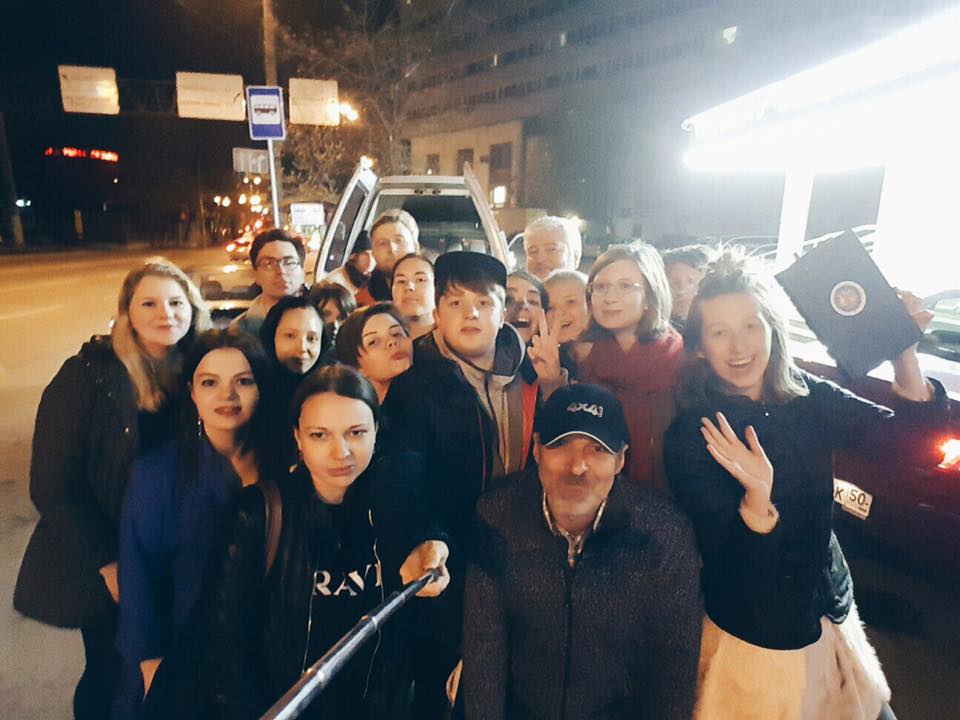
The plan to go to Iran initially seemed as unattainable as suggesting we go to the moon. Of course students may view a trip like this as an unattainable dream, but thankfully the University has supported the expedition for three years now. This year, due to the distances involved, the expedition also received financial support from the Foundation for the Support and Preservation of Cultural Initiatives 'Sobranie'.
Before setting off on the two-week trip, we held a meeting with Iranian culture expert and tutor at the HSE's School of Asian Studies, Anton Zykov, who accompanied us and advised us throughout the trip.
The most important thing that the expedition leaders prepare us for are the differences between the public, media, and academic representations of any particular region's culture – and what we're likely to encounter in real life. As guests, we were keen not to violate any cultural norms and regulations, and sought to pay particular attention to cultural nuances in contemporary Iran.
We arrived in Iran via Georgia and Armenia – a highly interesting ethnographic experience. Georgia was something of a training ground for research ahead of our trip to Iran. When you arrive in a new city, and you're there for just two days, you learn to orient yourself in your new surroundings very rapidly. You don't have much time to do everything.
The most important meeting we had in Yerevan was with the Alexander Iskandaryan, leading Caucasus specialist and political scientist at the Caucasus Institute. He gave us a very interesting lecture about Armenia that looked at the particular problems Armenian society faces today.
And Finally — Iran
We visited four Iranian cities: Tabriz, Tehran, Isfahan, and Yazd. Tabriz is located in North-West Iran, in the East Azerbaijan province, and most of the population are Azeris. After a morning stroll through the city, we headed to the Kandovan village not far from the city. There we saw amazing buildings built right into the rocks.
Nuances Relating to the Dress Code
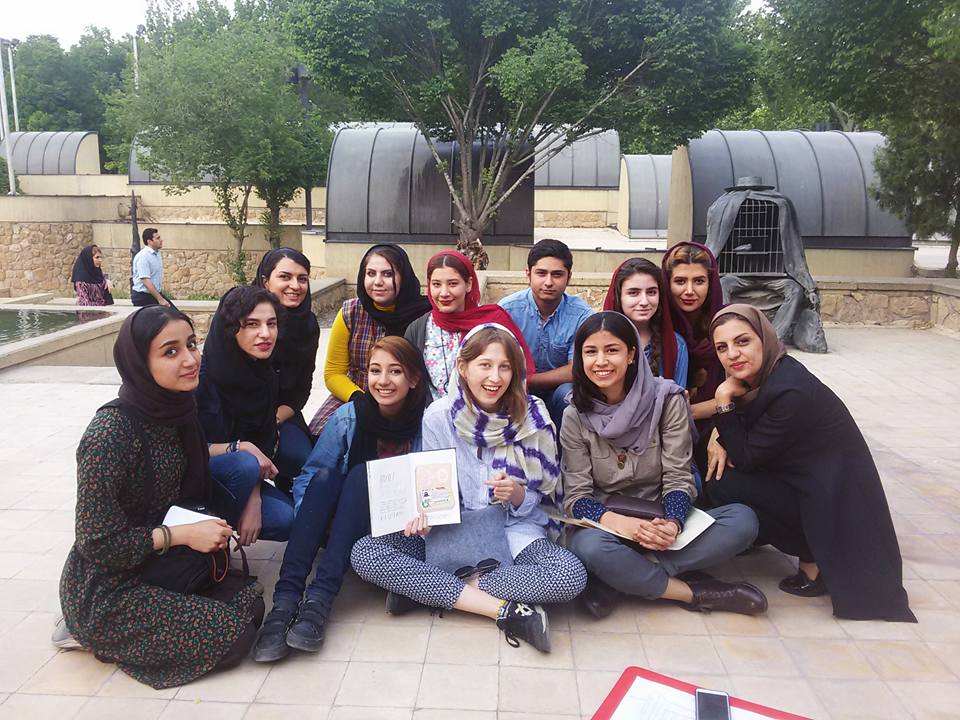
In Iran following the Islamic dress and behavior code is obligatory – all hotels include notices for guests about the need for people, especially women, to respect the local traditions and cover their hair (wear the hijab).
Iranian women and girls take great care in choosing the material, color, and style of their clothes. Members of the expedition followed the dress code but still immediately stood out due to their choice of brightly patterned prints and material.
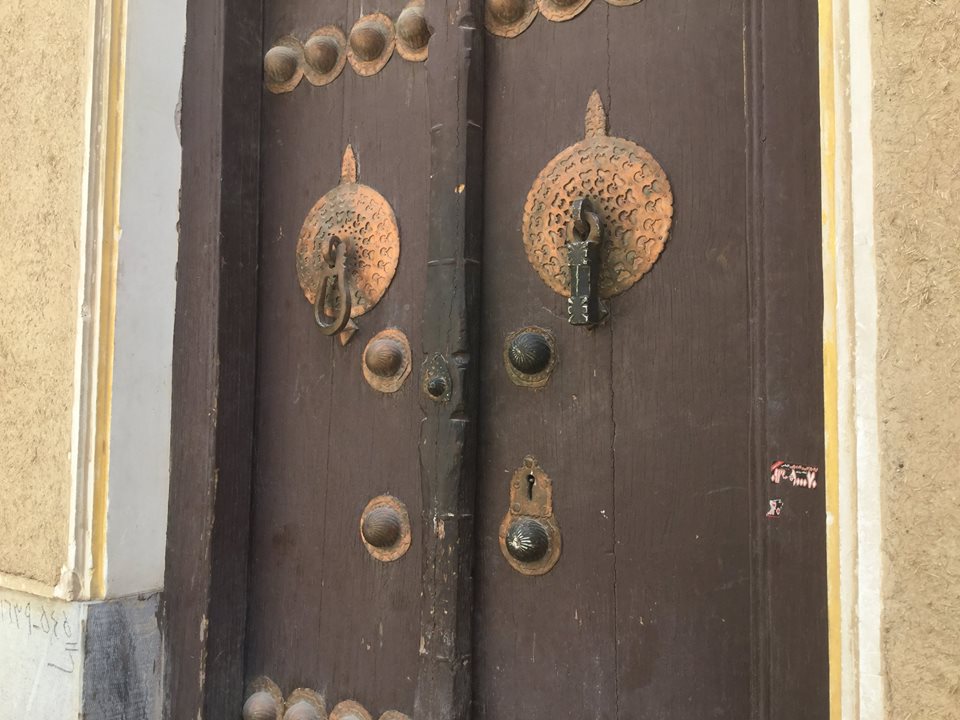 Photo by Rouslan Khestanov
Photo by Rouslan Khestanov
Some Iranian houses have two types of door-knockers – one wood, one metal, one for women, one for men. That is done so that women inside can always hear who's come to visit them and if needed adopt the appropriate dress to meet their guests.
Iranian Cuisine
Iranian cuisine was very different from what we expected, it is quite plain and not very diverse. The most common form of dish is a large plate of rice with a kebab (chelo kebob). The kebabs are usually made from beef, lamb, or chicken.
Crossing the roads in major cities is quite an experience. It feels like most of the drivers want to overtake you or run you over. Drivers act like there aren't any pedestrians and pedestrians like there aren't any crossings or lights, and in southern Tehran people just don't pay attention to them. Cars often drive onto the pavements, and special bollards have been erected to prevent this happening – even the thinnest of people would find it difficult to squeeze between them.
Iranian Decor
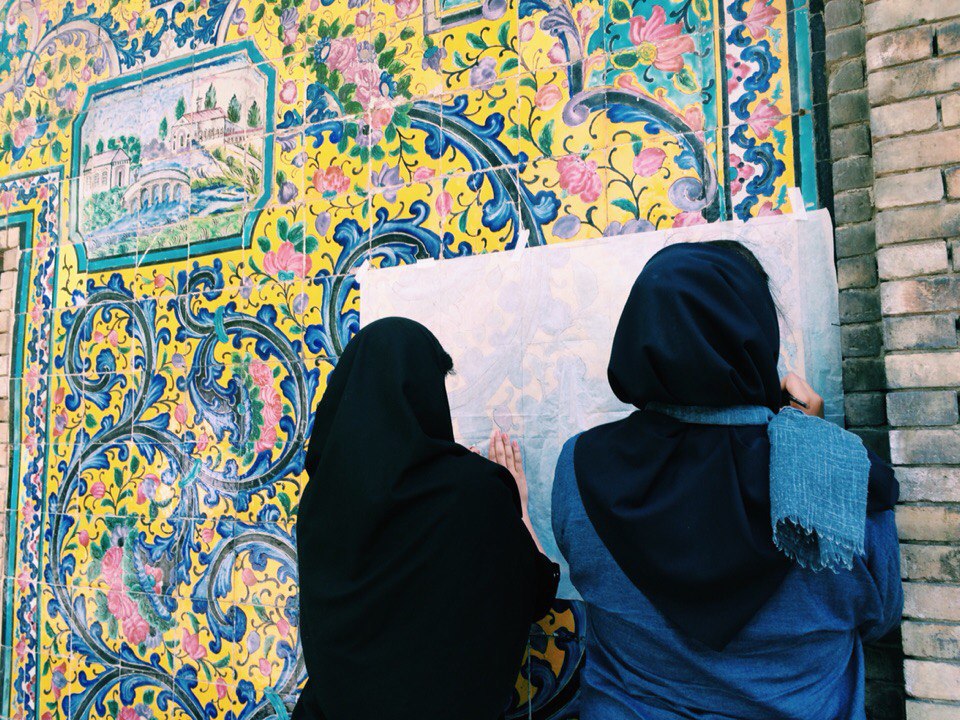 Photo by Veronika Molchanova
Photo by Veronika Molchanova
Iranian architecture is rich in traditional motifs, in particular the use of decoration in modern buildings. Decoration is at the heart of Iranian national culture. It is used in architecture, in printing, and in arts and crafts. One member of the expedition plans to look at this in their work.
Iranian Bazaars
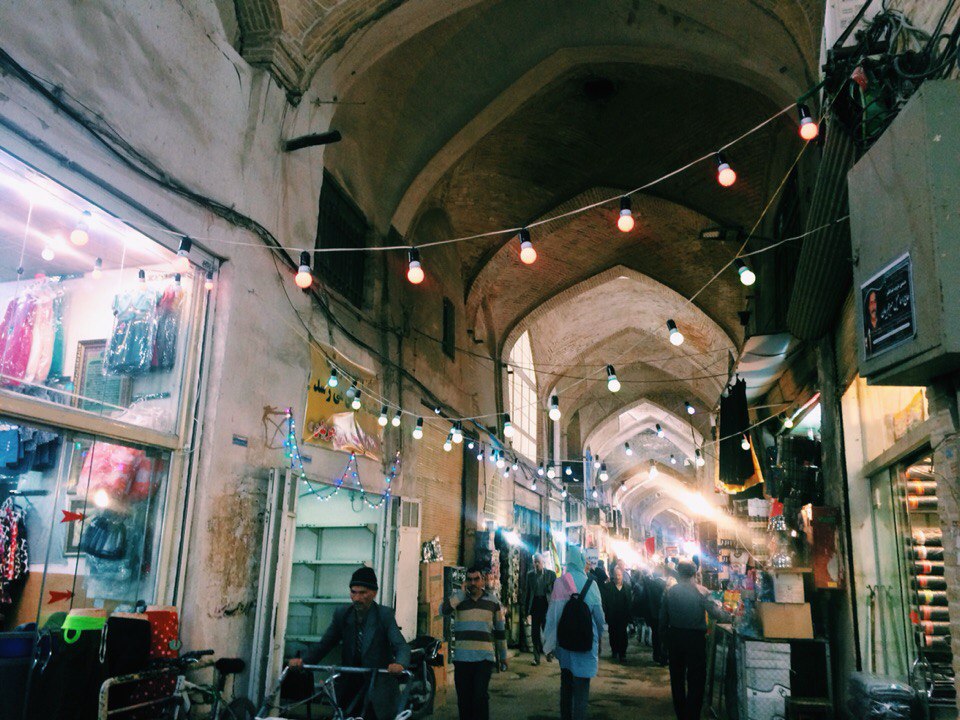 Photo by Veronika Molchanova
Photo by Veronika Molchanova
Bazaars (markets) in Tabriz, Isfahan, and Tehran are a key part of the urban environment, they take up a lot of space and even have their own mosques and schools. It’s not always clear where the bazaar ends and regular city streets start. It is impossible to imagine an Iranian city without a bazaar.
Arts and Crafts
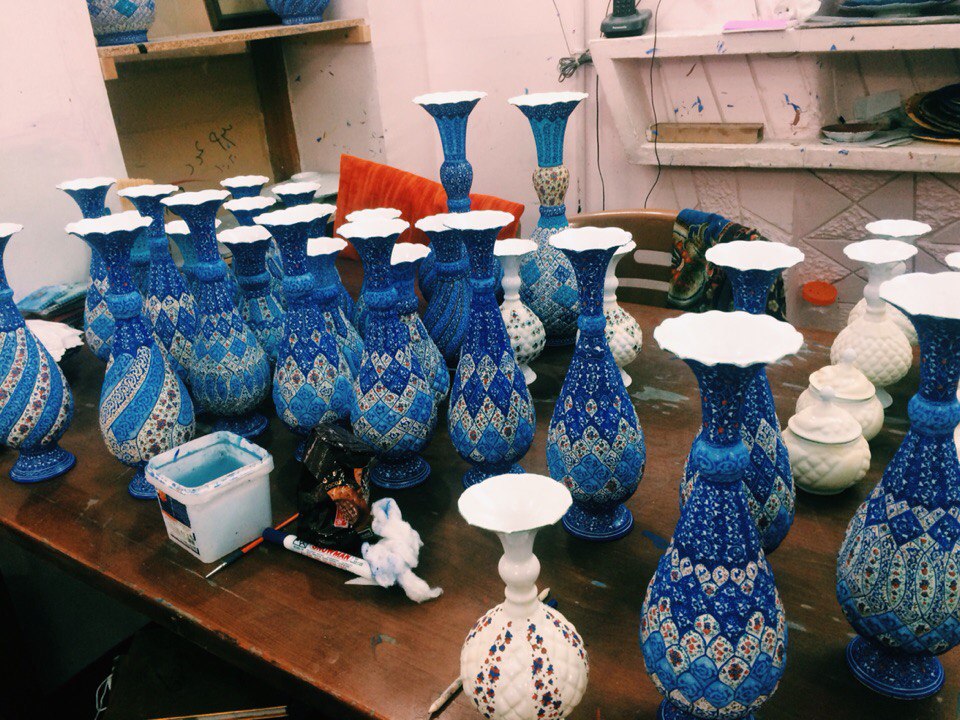 Photo by Veronika Molchanova
Photo by Veronika Molchanova
Traditional arts and crafts are a subject being looked at this year by the Laboratory for Cultural Research, and it was important to get a sense of how these workshops are set up in Iran. We were lucky, we not only got to see these goods being sold in bazaars, but also got to visit a workshop near a the Isfahan bazaar, where we could see them being made. We found ourselves in a workshop producing copper utensils decorated with a blue glaze. Here we had the chance to observe the entire production process. In one section, a man hammers the product, before passing it through several chemical treatments and giving it a white top coat.
The room where the decoration was added was particularly impressive. We were greeted very warmly by two artists who were bent over jugs and vases. In the final stage the decorated product is glazed in an oven.
It was interesting to note that the workers use their mobile phones to note how much time they spend on each product – production cycle rationalization is visible even in the most traditional of industries. One of the pieces of research carried out during the expedition was on carpet weaving, a very important cultural industry and export for Iran.
Ancient Tehran
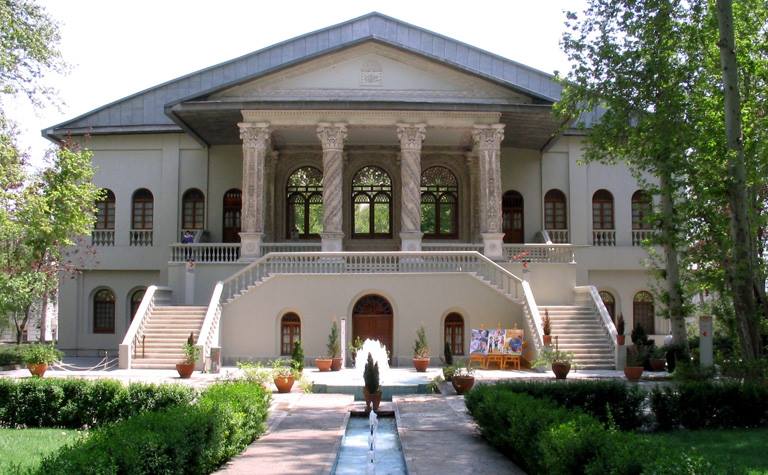 Photo by Genia Bobyleva
Photo by Genia Bobyleva
Tehran is divided into two parts, north and south. Historically, Isfahan was the Persian capital, and Tehran was chiefly built as a summer residence. In the north the city extends to the Alborz mountains, where there’s an excellent viewing platform and recreation zone, ski resorts, and at their foothills – wealthy residential areas. When you head down deeper into the city’s central and southern parts, then a lot of the city is given over to religious life and the bazaars.
Iranian People
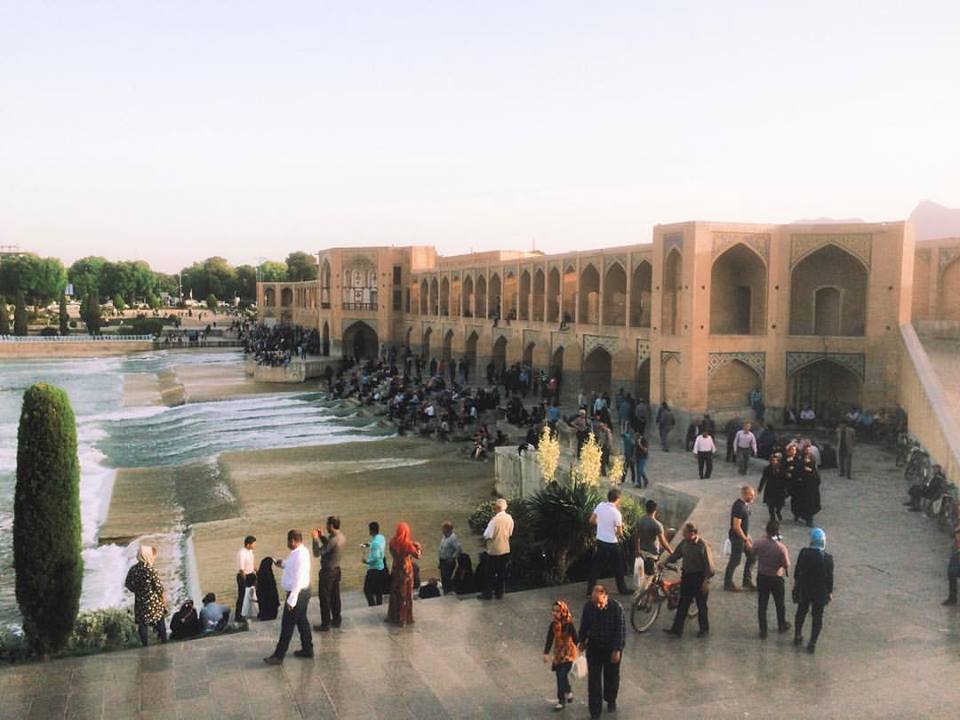 Photo by Alexander Suvalko
Photo by Alexander Suvalko
Isfahan is greener than Tehran, there are whole streets shaded by trees and public spaces of a kind not seen anywhere else in Iran, or the world. The Khadju bridge, with its 24 arches and 2 storeys, as well as a recreational pavilion, dating back to the 17th century is a particular attraction. This is also known as the singing bridge.
We talked a lot to young people about culture and public life. Iranians are very welcoming and are happy to invite you to dinner. Iranians love to give each other compliments. For example, when you’re at the bazaar and you want to ask the price of something, you should first compliment the trader, who will likely respond along the lines of ‘put your money away, it’s not important.’ Then he’ll tell you the price, and that’s when you should respond with a common Persian phrase that translates literally as ‘Thank you, I am your servant’, ‘I would lay down my life for you’ in what is known in Iran as ‘taarof’.
Anyone who has only travelled in Europe will be stunned by how open and sincere Iranians are in interacting with strangers. In Isfahan we were given free rides around the city three times. The drivers would start talking, ask us where we were from, what we think of Iran, and what we’ve seen. When you expect them to tell you a price, they say ‘No, I don’t need anything, I’m just happy to have been able to help you’. Iranians really want visitors to have a good impression of their country. One young person said ‘tell your friends about Iran, and if they come here – give them my phone number, I’ll show them around Isfahan.’. You’d be unlikely to find such openness and warmth anywhere else.
Academic Life on the Expedition
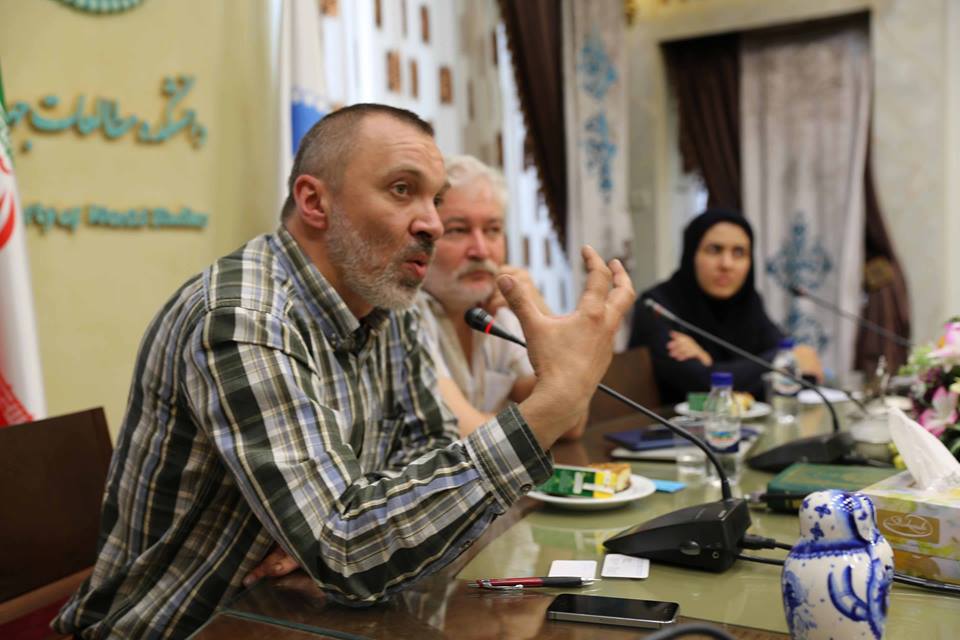 Photo by Alexander Suvalko
Photo by Alexander Suvalko
Any HSE School of Cultural Studies expedition also involves academic contacts. Where possible the expedition leaders try to organise meetings with local students, researchers, and experts, who are best placed to talk about their country, city, region, and answer questions. In Vladikavkaz, Yerevan, and Tehran we had the opportunity to interact with local students and researchers, and in Tehran to visit Tehran University. Vitaly Kurennoy and Rouslan Khestanov gave lectures for the students studying Russian culture and those interested in Russia. And their Russian language knowledge and the level of the questions they asked were very high. After the lecture we talked with students and asked about the research they were carrying out, even helping them find books in Russian that would further their research.
One of our days in Tehran was completely devoted to a special seminar at the Iranian Center for Caucasus Studies. Iranian researchers are very interested in Russia and in the opinion of their Russian colleagues on a number of global and local problems.
The City in the Desert
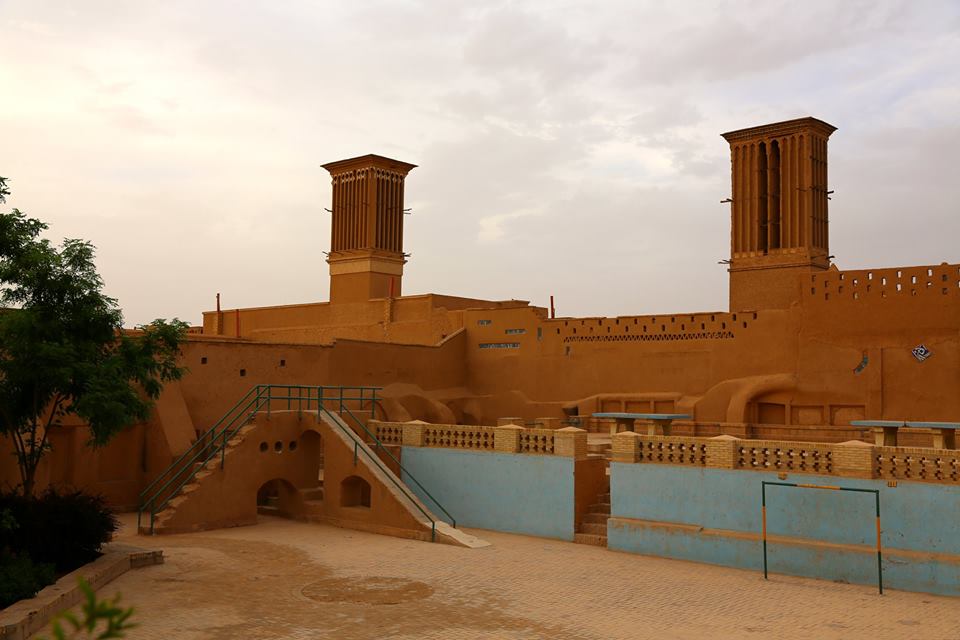 Photo by Vitaly Kurennoy
Photo by Vitaly Kurennoy
The last place we visited on our expedition was Yazd, a remarkable city in the desert. We dubbed it Tatooine from Star Wars. It looked like a set from A Thousand and One Nights. We visited the most prominent Zoroastrian pilgrimage site, the Chak-Chak oasia (drop-drop – named after the sound water makes in Persian). In the middle of the desert, a tree with enormous roots grows out of the cliff-face, and a sacred Zoroastrian fire burns in the sanctuary. This place is home to a number of surprising legends and forecasts. The former head of the Zoroastrian community in Yazd accompanied us on the tour and answered our questions.
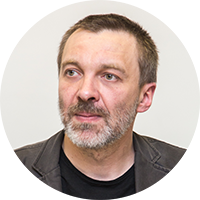 Vitaly Kurennoy, Head of the HSE School of Cultural Studies
Vitaly Kurennoy, Head of the HSE School of Cultural Studies
‘The annual cultural and anthropological expedition offers important research and life experience for our students. We may laugh at Herodotous, who described mythical beings that inhabited far-off lands. But our understanding of the broader world today is similarly mythologized. The expedition offers a rare chance to break down these myths and stereotypes. Cultural studies requires in-depth immersion in theoretical texts, in the histories of different cultures, and the expedition is an excellent chance to put this theoretical knowledge to a practical test and look at how the theories and descriptions measure up to the reality. One important part of our trips is understanding the real difficulty of immersing yourself in the material you’re researching, feeling the limits that come from intercultural communication and to test the boundaries of your own culture and its interaction with other cultures – and in doing so – to better understand yourself.’
The expedition comprised 2nd, 3rd, and 4th year BA students and 1st and 2nd year MA students at the HSE’s School of Cultural Studies: Evgenia Bobyleva, Alena Kolesnikova, Alexandra Skorobogatova, Elizaveta Kosmidis, Veronika Molchanova, Ekaterina Kolpinets, Alisa Kozlyakova, Kristina Popova, Vladislav Zemenkov, Irina Nikitina, Ekaterina Gushchina. Photographs, videos, and descriptions from the trip can be found on the expedition website, on Facebook, Vkontakte and Instagram, and using the #cultexp hashtag on social media.
See also:
‘There Are Many Directions in Which We Can Develop Our Relations with Iran’
On February 12, an official signing ceremony was held for an agreement on the free transfer of literature published by the Organisation for Researching and Composing University Textbooks in the Islamic Sciences and the Humanities under the Ministry of Science, Research and Technology of the Islamic Republic of Iran (SAMT) to HSE University. The event took place in the HSE University library on Pokrovsky Bulvar.
Scientific and Educational Partnership of HSE University and Iran Is Gaining Momentum
A delegation from Mofid University has visited HSE University. Representatives of the Iranian university expressed interest in cooperation with HSE in the framework of research projects and educational programmes in the field of economics, legal aspects of the Islamic system of finance and other areas. The parties also discussed the opportunities for launching a joint academic mobility programme.
‘We Would Be Happy to See More Iranian Students at Our University’
HSE University has hosted the signing of cooperation agreements with two Iranian universities—Allameh Tabataba’i University (ATU) and the University of Isfahan (UI). Delegations from the universities led by ATU President Abdollah Motamedi and UI President Hossein Harsij visited HSE University and met with Rector Nikita Anisimov and staff of the HSE International Office led by Vice Rector Victoria Panova.
‘Working in Academia Is My Lifelong Desire’
Majid Sohrabi is a 28 year-old student from Iran currently enrolled in a doctoral programme at the HSE University Faculty of Computer Science. Before starting his PhD, he graduated with honours from the university’s Master of Data Science programme. In addition to studying, he also works as an assistant at the School of Data Analysis and Artificial Intelligence and a research assistant at the Laboratory for Models and Methods of Computational Pragmatics.
Khanty Dialects Differ More Than Slavic Languages
Idalia Fedotova, researcher at HSE University and the RAS Ivannikov Institute for System Programming, examined lexical differences across Khanty dialects and found that members of this relatively small ethnic group speak three distinct languages—rather than two, as previously thought. The findings are published in Ural-Altaic Studies.
Normal for the Abnormal: How the Image of a Maniac Appeared in Popular Culture
The image of a serial killer and/or rapist is a product of scientific discourse, transferred to the cinema, and then to TV series. In many films, the plot is based on finding and capturing such criminals by using a particular method — social and psychological profiling, and the appearance of a maniac in the cinema has been normalized today. Maria Marey, Senior Lecturer at HSE School of Philosophy and Cultural Studies, analysed how science and philosophy have contributed to the emergence of serial killer characters in popular culture, and how it affects the audience.
‘We Have Always Loved You, Sakhalin’: Research Expedition Studies Sociocultural Anthropology of Miners' Working Life in the USSR
Researchers from the School of Foreign Languages and the Group for Historical Research, together with students of the History programme at the HSE University campus in Perm, have come back from an expedition to Sakhalin Island, where they studied Soviet industrial culture and the working life of miners. The expedition participants shared their impressions of their ‘immersion into the past’ and the extraordinary landscapes of the island with the HSE News Service.
'Canonisation' of Fanfiction: How Fan Creations Are Reshaping Cultural Canons
Harry Potter becomes a scientist, 'Hermione has changed a lot over the summer', and the Bennet sisters from Pride and Prejudice are fighting against zombies. A game, an unwillingness to part with one’s favourite characters, an attempt to correct the author's 'mistakes' — all of this is fanfiction. Fan creations, on one hand, draw on cultural canons, and on the other hand, challenge them and offer an alternative vision. High art can no longer ignore fan practices — both as its own mirror reflections and as a space for new opportunities. A paper by HSE researcher Ksenia Romanenko helps us delve deeper into the culture of fanfiction and examine its relationship to the cultural canon.
‘Professionals Who Have Studied Outside Their Home Countries Should Shape New Narratives’
Studies in lockdown, the fun of Russian classes, and the hardships of learning microeconomics: the HSE News Service talked to three international students of economics who are getting their master’s degrees from HSE University this year.
Irresistible Passion: Philately in the USSR
Soviet-era postage stamps illustrate the country's history in miniature, from the early years following the Communist revolution to the 1980s' perestroika. Government and public attitudes towards philatelists reflected an overall distrust of any type of 'otherness'; indeed, why would anyone spend time studying and collecting postage stamps? Thus, it should come as no surprise that periods of philatelic internationalism were followed by times of isolationism and pressure on stamp collectors. Despite efforts to place philately within the procrustean bed of Soviet propaganda, people with a passion for stamps stood out from the crowd and were often perceived as dissenters. The discussion of Soviet philately presented below is based on a paper by philologist Konstantin Bogdanov, professor at the HSE Campus in St. Petersburg.


